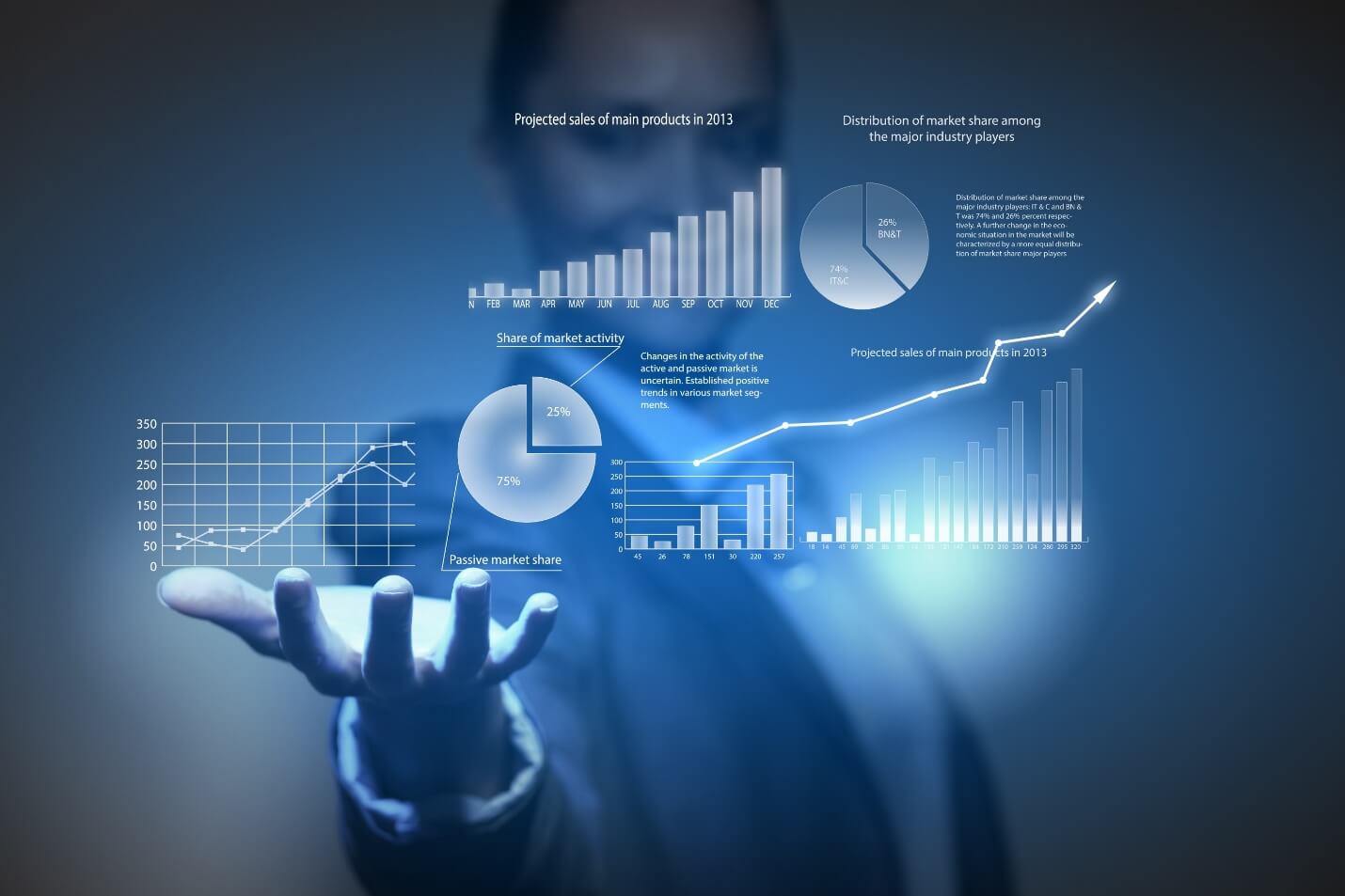
How Machine Learning (ML) Services are Transforming Industries? Explore ML applications in healthcare, finance, cybersecurity & logistics driving efficiency, cost savings & innovation.
Modern industries have started their transition to AI-powered machine learning solutions, as they optimize operational processes and generate advanced levels of process efficiency.
Machine learning services have evolved into essential tools, that help organizations forecast manufacturing errors, as well as tailor healthcare solutions to stay in competitive markets.
CTOs and CIOs, alongside Data Scientists and AI Researchers need complete knowledge of these advances to use AI successfully for business advancement and innovation creation.
We investigate in this article industrial machine learning applications together with their advantages and case-driven examples as well as future outlooks and predictive analytics analysis and other main topics including healthcare machine learning and financial risk management and cybersecurity ML applications.

Introduction to ML Services
Machine learning services apply automated algorithms along with analytic data methods to execute choices and identify patterns and anticipate outcomes across diverse sectors with minimum human supervision.
Traditional software differs from ML systems because these systems learn to generate more precise insights, as they process additional datasets.
Businesses that implement Machine Learning obtain substantial efficiency improvements, cost efficiency and innovative capabilities, which makes them leaders within the AI-based economy.
Key Machine Learning Applications in Industries
Current machine learning applications transform industries into three fundamental groups Business AI, Predictive Analytics & program-specific innovations.
1. ML for Healthcare Industry
HealthCare employs machine learning to achieve very accurate diagnostic results and deliver customized treatment plans.
The healthcare industry experiences a modern revolution through advanced ML capabilities that perform better diagnostics and discover new drugs and prevent illnesses.
Advanced ML capabilities are revolutionizing healthcare, improving diagnostics, drug discovery, and illness prevention
Key examples include:
- Detection of breast cancer occurs more successfully using Google ML systems in mammograms than with human radiologists.
Google ML systems can detect breast cancer more successfully in mammograms than human radiologists.
- IBM Watson uses patient historical data to detect heart disease risk factors, whose symptoms have not yet appeared, while also assessing diabetes probability.
- Insilico Medicine company employs ML technology to compress traditional drug development timelines from multiple years down to months.
- Predictive analytics technologies enable proactive health care, while lowering healthcare expenses and saving lives because they enable early detection which is driving healthcare advancement.
2. ML for Financial Risk Management: Fraud Detection & Market Prediction
Financial organizations deploy the Machine Learning approach to detect fraudulent activities and market predictions.
Financial institutions as well as the banking sector adopt ML techniques to reduce risks while maximizing their investment returns.
Through real-time transaction analysis, ML algorithms recognize fraudulent indicators that help identify potential fraud activities. ML-based detection systems, a multinational bank, lowered its financial losses substantially. A multinational bank substantially lowered its financial losses using ML-based detection systems.
Market Forecasts function through ML operations to help hedge funds predict market changes for profit maximization. ML-powered market forecasts help hedge funds predict market changes to maximize profits.
The combination of AI-based business tools strengthens system reliability and raises customer confidence while improving revenue outcomes, thus demonstrating the importance of ML for protecting global financial systems.
3. ML in Cybersecurity: Real-Time Threat Detection
ML plays a crucial part in cybersecurity, although it receives only passing mention in the original publication. AI systems use network surveillance to identify security breaches through their faster response times compared to older methods of detection.
Modern cyber threats demand preemptive actions, which ML models identify through their ability to detect new attack patterns.
4. Manufacturing: Smart Automation & Quality Control
Eliminating production inefficiencies using ML-powered systems:
- AI-powered visual examination tools assist in defect spotting to minimize factory recall situations.
- The implementation of collaborative robots (Cobots) allows workers to concentrate on innovative tasks by performing repetitive operations independently.
- Mass Customization: ML enables cost-effective personalization, such as tailor-made car interiors or footwear.
5. Retail: Hyper-Personalization & Logistics
Retail operations can be optimized using forecast trends generated through the implementation of ML technology:
- Predictive models deployed by algorithms help businesses manage their stocks effectively to prevent unnecessary product loss.
- The automated robot system operated by ML at Amazon retrieves products swiftly which enables speedier order processing.
6. Energy & Utilities: Sustainable Efficiency
- Through ML applications, utilities reach maximum energy grid efficiency, while uniting renewable energy resources effectively.
- Machine learning models predict customer demand patterns, which allows utilities to take preventive actions to manage their grids.
- Integrating ML in operational software for renewable energies can predict solar plant output, while managing grid storage requirements.
- Operational software predicted solar plant output uses ML to integrate renewable energies, while managing grid storage requirements.
Benefits of ML Adoption
- Cost Reduction: Predictive maintenance cuts downtime; fraud detection saves millions.
- Enhanced Accuracy: ML minimizes human error in diagnostics and quality control.
- Scalability: Solutions like personalized retail or automated logistics adapt to growing demands.
- Sustainability: Smarter energy use and waste reduction support green initiatives.
Case Studies: ML in Action
Healthcare: Fraud Detection in Insurance Claims
A Saudi Arabian research group applied a random forest classifier to detect fraudulent healthcare insurance claims with an accuracy level of 98.21%.
2. Financial Fraud Prevention: Real-Time Transaction Monitoring
A combined AI-based system for fraud detection at FinSecure Bank implemented supervised and unsupervised learning to decrease fraudulent transactions by 60%.
3. Logistics Optimization: Route and Fuel Efficiency
DHL implements machine learning algorithms that scan historical data to detect future-demand shaping trends and patterns.
4. Energy Efficiency: Grid Management
Italian energy company “Eni” utilizes machine learning techniques to enhance both the performance levels and cost savings of its oil and gas infrastructure.
Machine learning future trends
Pragmatic AI Adoption: Businesses pivot from hype-driven experiments to measurable outcomes like ROI and efficiency as generative AI adoption matures.
2. Beyond Chatbots: Generative AI evolves into multimodal tools (audio, video, robotics) and embedded applications, reducing reliance on text-based interfaces.
3. Agentic AI: Autonomous AI agents gain traction for workflow automation but face ethical risks like hallucinations and unintended consequences.
4. Commoditized Models: Foundation models become interchangeable, shifting competition to usability, cost, and integration with legacy systems.
5. Domain-Specific AI: Narrow, industry-tailored models replace generic LLMs, prioritizing accuracy and ethical alignment for high-risk use cases.
6. AI Literacy: Organizations prioritize workforce training to navigate AI tools’ limitations, bridging gaps between formal policies and informal usage.
7. Regulatory Fragmentation: The EU’s strict AI Act contrasts with the U.S.’s light-touch approach, complicating global compliance strategies.
8. AI-Driven Threats: Deepfakes, adversarial attacks, and AI-powered phishing escalate, forcing businesses to integrate AI security into core strategies.
Ready to Optimize Your Operations?
You can easily read more about ML’s potential or get a free consultation with our AI experts at IPC to tailor solutions for your industry.
IPC is your trusted partner in ML applications, so be prepared for the next steps in your business development advancement.
Contact us for any inquiry.

